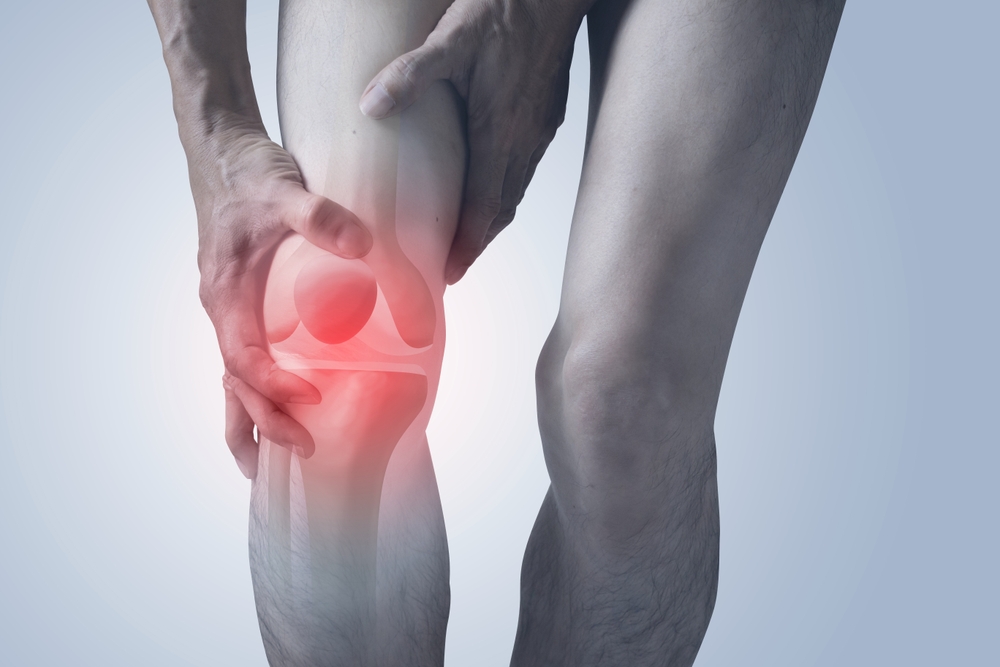That occasional twinge when you stand up. The stiffness that seems to linger just a bit longer each morning. The subtle click in your knee that wasn’t there last year. Your body sends countless signals that your joints need more attention long before pain becomes your constant companion. The problem? Most of us have been conditioned to ignore these whispers until they become shouts.
Catching joint issues in their earliest stages can be the difference between simple lifestyle adjustments and surgical interventions down the road. Your joints are remarkably resilient, but they’re also sending you messages that deserve your attention. Let’s decode these early warning signs that your body’s hinges might need a little more TLC.
Morning stiffness that wasn’t there before
That feeling of needing to “work out the kinks” when you first get out of bed might seem like a normal part of aging, but it’s actually one of the earliest indicators your joints are struggling. Healthy joints transition smoothly from rest to movement. When your morning routine now includes wincing and slow movements for the first 15-30 minutes of the day, your joint fluid dynamics are changing.
This early morning stiffness often appears months or even years before constant pain develops. It happens because the synovial fluid that lubricates your joints becomes less efficient overnight when there’s underlying inflammation or cartilage changes. Your body essentially needs more time to distribute this fluid properly throughout the joint when you start moving again.
The duration of this stiffness matters significantly. If it disappears after a few minutes of movement, you’re catching things very early. If it persists for half an hour or longer, more substantial changes may be occurring within the joint structures. Either way, this morning message deserves your attention before it transforms into the alarm bells of persistent pain.
Weather sensitivity you never had
Suddenly being able to predict rain better than the local meteorologist isn’t a superpower—it’s a signal from your joints. That ache before a storm or stiffness during temperature drops indicates changes in your joint tissues. This sensitivity develops because affected joints contain tissues that react differently to barometric pressure changes than healthy ones.
The nerve endings in and around your joints become more sensitive to pressure changes when there’s subtle inflammation or early wear. These sensory receptors essentially become hypervigilant, responding to environmental shifts that previously went unnoticed. Your grandmother’s weather predictions were actually early warning systems from her own body.
The specific pattern of weather sensitivity offers clues about what’s happening internally. Aching before precipitation often indicates inflammatory changes, while sensitivity to cold may suggest early vascular changes around the joint. Pay attention to which weather triggers affect you most and which joints respond—this information can help shape your prevention strategy.
Reduced range of motion in specific movements
Maybe you’ve noticed you can’t quite reach the top shelf as easily, or looking over your shoulder while backing up your car requires more torso turning than before. These subtle limitations in movement range often appear well before pain becomes a regular companion. Each joint in your body has an optimal range of motion that can deteriorate so gradually you barely notice.
The body compensates brilliantly for these small losses, which is why they’re easy to miss. You might unconsciously begin to turn your whole body instead of just your neck, or take an extra step when reaching for something rather than extending your arm fully. These adaptations happen automatically, masking the underlying joint changes until the limitations become more pronounced.
Testing your range of motion periodically can help identify these changes early. Simple movements like reaching behind your back, turning your head side to side, or squatting down can reveal subtle restrictions. When you notice these limitations, they’re valuable early indicators that specific joints need attention before more serious problems develop.
Unusual sounds that weren’t there before
The occasional joint pop has probably been part of your body’s symphony for years. But new noises—grinding, clicking, or consistent popping with specific movements—warrant attention. These acoustic changes reflect alterations in your joint surfaces and how they interact during movement.
Grinding sensations, medically termed crepitus, often indicate that the normally smooth cartilage surfaces are developing irregularities. Instead of gliding silently against each other, these roughened surfaces create vibrations you can feel and sometimes hear. This doesn’t always mean severe damage has occurred, especially when pain isn’t present, but it does signal changes that deserve attention.
Clicking or catching sensations during specific movements can indicate minor structural changes within the joint. These might involve the tendons that cross the joint, small alterations in the joint surfaces, or changes in the joint capsule itself. When these sounds accompany specific movements consistently, they’re sending you an important message about that joint’s health.
Fatigue that follows specific activities
Unusual tiredness after activities you previously handled with ease often has joint origins that go unrecognized. When joints aren’t functioning optimally, your body expends significantly more energy performing basic movements. This increased energy expenditure accumulates, leaving you unexpectedly drained after formerly simple tasks.
This fatigue happens because your muscles must work harder to stabilize and move joints that aren’t operating efficiently. Your body essentially creates energy-expensive workarounds for joint limitations. The compensation patterns required to protect and support struggling joints demand more physical resources than normal movement patterns.
The specificity of this fatigue provides valuable clues. If you notice unusual tiredness after particular activities—like walking on uneven surfaces, climbing stairs, or working with your hands—pay attention to which joints are involved in those movements. This directed fatigue often points directly to which joints need supportive interventions before pain becomes your primary symptom.
Grip or strength changes in everyday tasks
Opening jars becomes surprisingly challenging. Your handwriting looks different after writing more than a few sentences. The grocery bags feel heavier than they should. These subtle strength and grip changes frequently stem from joint issues rather than muscle weakness, especially when they appear in specific activities rather than as general weakness.
Joint discomfort triggers neurological responses that temporarily inhibit muscle activation. This protective mechanism, called arthrogenic muscle inhibition, prevents your body from generating forces that might further damage vulnerable joints. The result is what feels like weakness but actually represents your nervous system protecting joints that are sending early distress signals.
The situational nature of these apparent strength changes provides important diagnostic information. If you notice difficulty with specific tasks that require certain joint movements, while maintaining normal strength in other activities, your body is likely flagging particular joints that need attention rather than indicating overall muscle weakness.
Recognizing these early warning signs gives you a tremendous advantage in maintaining long-term joint health. The interventions needed at this stage are typically far less invasive than those required once pain becomes persistent. Simple modifications to movement patterns, targeted exercises, anti-inflammatory nutrition, and appropriate supplementation can often address these early signals before they evolve into more serious conditions.
Which of these subtle messages has your body been sending you lately?















